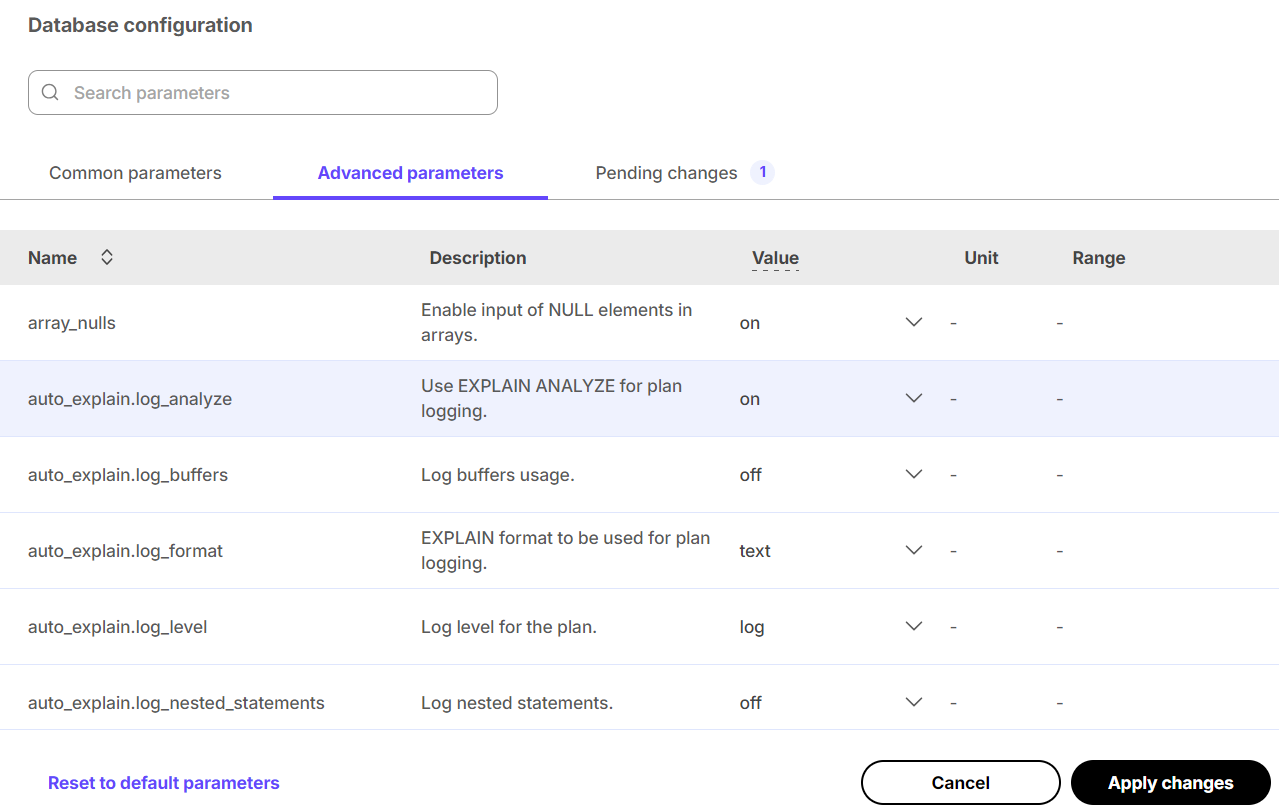Tiger Cloud: Performance, Scale, Enterprise, Free
Self-hosted products
MST
It is possible to configure a wide variety of Tiger Cloud service database parameters by
navigating to the Advanced parameters tab under the Database
configuration heading. The advanced parameters are displayed in a scrollable and searchable list.

As with the basic database configuration parameters, any changes are highlighted
and the Apply changes, or Apply changes and restart, button is available,
prompting you to confirm changes before the service is modified.
To create more than one database, you need to create a new service for each database. Tiger Cloud does not support multiple databases within the same service. Having a separate service for each database affords each database its own isolated resources.
You can also use schemas to organize tables into logical groups. A single database can contain multiple schemas, which in turn contain tables. The main difference between isolating with databases versus schemas is that a user can access objects in any of the schemas in the database they are connected to, so long as they have the corresponding privileges. Schemas can help isolate smaller use cases that do not warrant their own service.
Please refer to the Grand Unified Configuration (GUC) parameters for a complete list.
Max background worker processes allocated to TimescaleDB. Set to at least 1 + the number of databases loaded with the TimescaleDB extension in a Postgres instance. Default value is 16.
Disable the loading of the actual extension
Keywords
Found an issue on this page?Report an issue or Edit this page
in GitHub.